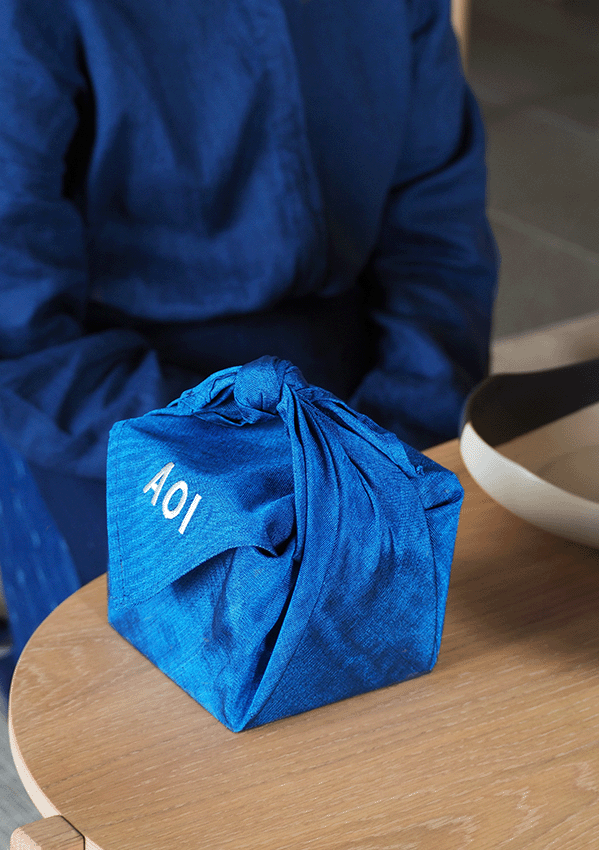
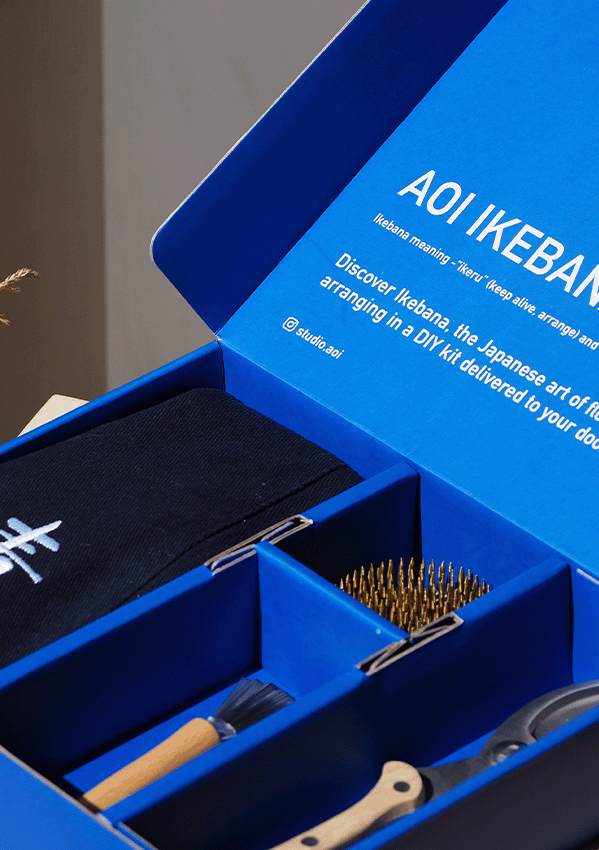

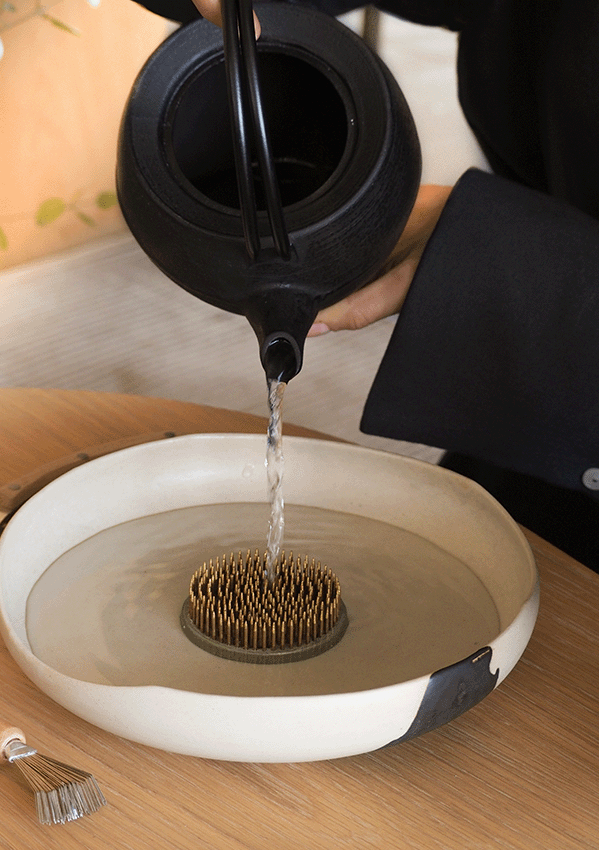
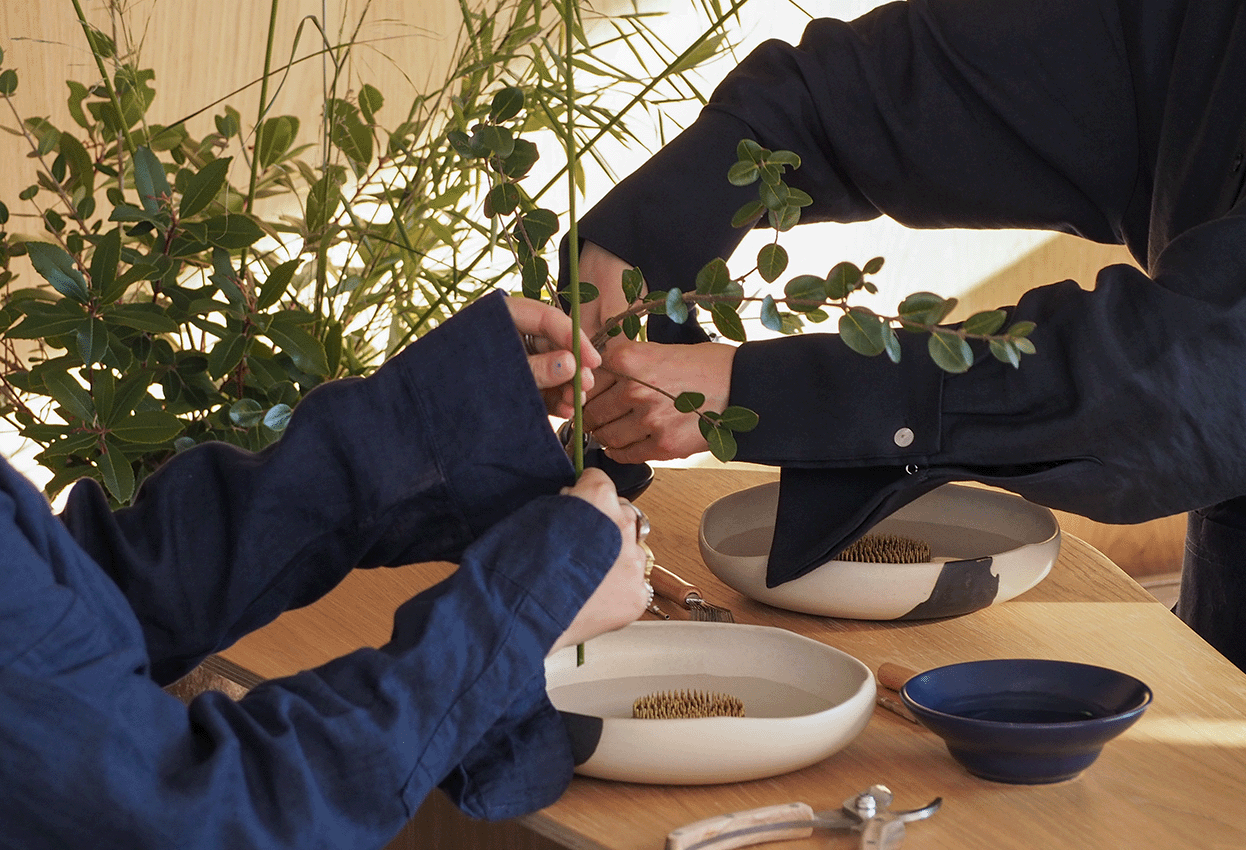
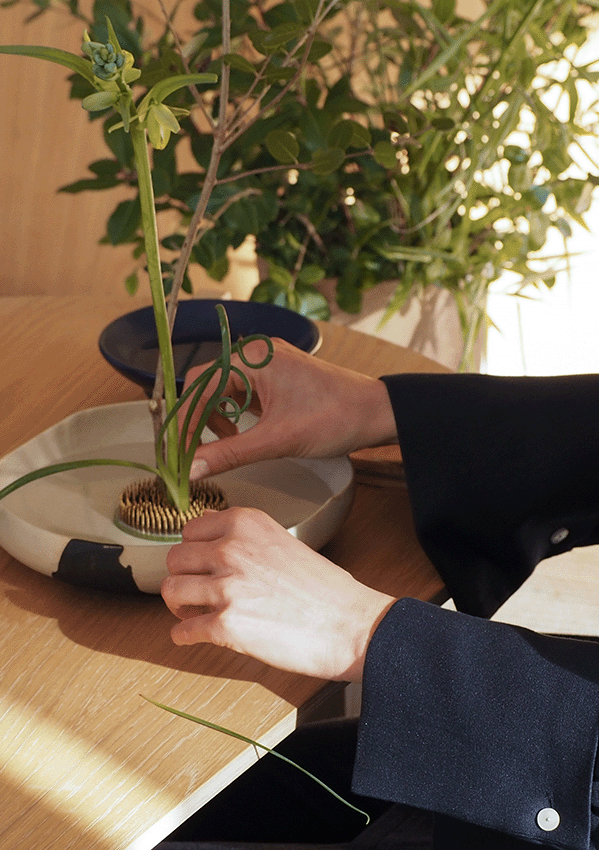
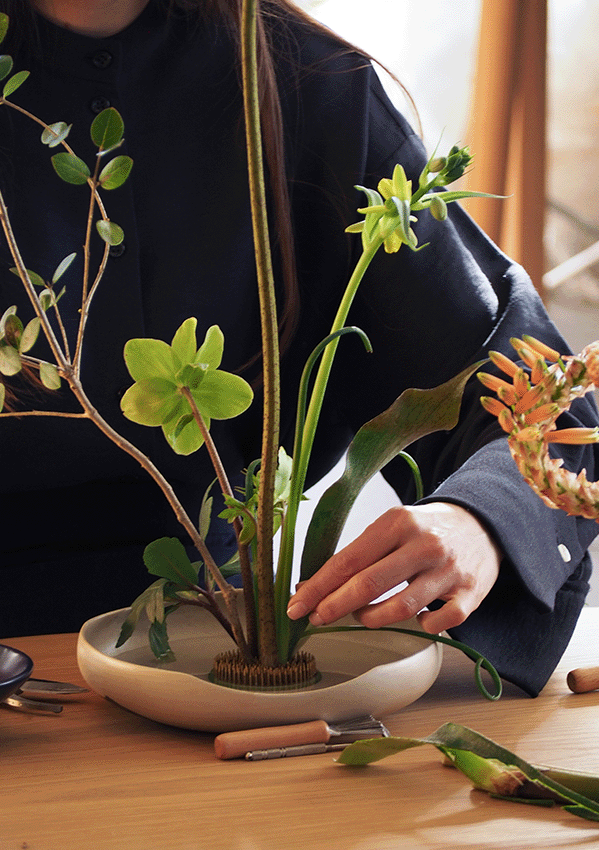

Studio AOI
The Compositions Rooted in the Balance of Nature

Ikebana, which hides the unique beauty of each element and the harmony behind its simple expression, embodies the depths, spirituality, and aesthetic values of Japanese culture at its core. As a Japanese art of flower arrangement, it represents a long-term creation process and an ongoing exploration journey. We hear about the Ikebana philosophy, which delicately showcases human harmony with nature and appreciation for it, from Ayşe and Pelin, who share it under the umbrella of Studio AOI.
Could you tell us about your own stories?
Ayşe: Touching the rough surface of a tree also means that one feels touched by the tree. Since my childhood, I have always enjoyed touching trees, and as I grew older, I felt I became even closer to nature with this awareness and appreciation. While conducting academic studies on Scandinavian forest schools, I experienced a delightful and dynamic journey, ranging from creative explorations in northern forests with children to venturing into floristry. I can say that my studies have always been various expressions of a desire to reconnect with nature within urban life through different means. Nowadays, I am drawn to materials, particularly focusing on the transformation of raw metal into something else. In my next step, I plan to combine materials with my Ikebana designs for an exhibition.
Pelin: Nature, composed of light and colours, has been a great inspiration to me since my childhood. To think of nature merely as biological diversity and a place for leisure would be unfair; therefore, I always strive to find a balance between its artistic interpretation and scientific reality. Different textures, anatomical structures, and various colours have always fascinated me throughout my life. Perhaps growing up hasn't changed anything, but it couldn't prevent me from leaving behind many things based on analytical thinking that I dedicated years to in my education. Before venturing into the floristry sector, I conducted research on biotechnological studies and smart drugs in academia. Currently, alongside Studio AOI, I work on my brand in natural fabric dyeing and continue my academic projects. My learning journey in Scientific Botanical Illustration continues, and I take great pleasure in ink art.
When and how did you meet Ikebana? What attracted you to this art at the very beginning of the story?
Ayşe: I first encountered Ikebana during a period when I was deeply immersed in flowers, and it immediately captured my interest and admiration. What initially drew me in was the design and functionality of the kenzan. I began collecting old kenzans during my travels and couldn't understand why these designs were not being produced or used in our country, particularly from a sectoral standpoint. After extensive research and a challenging production process, Studio AOI was established. Subsequently, my partnership with Pelin evolved into a brand that we nurtured with joy and enthusiasm. Following this journey, I received Ikebana training at the Sogetsu school in Tokyo. During our recent trip to Japan, we had the opportunity to collaborate with artists practising free-style Ikebana alongside traditional techniques, which was an incredible experience for us.
Pelin: Before Studio AOI, I spent many years working in a flower workshop. We were fortunate that Ayşe and I crossed paths there. Flowers, plants, and even what some might consider waste were all part of our creative process. The idea of being responsible to nature was always paramount. However, as our business expanded and despite our efforts, the burden of waste left behind began to grow. It was during this time of trying to live in harmony with nature that the ongoing dilemma shifted my perspective on the traditional floristry industry, leading me to fully embrace the art of Ikebana, which had already deeply resonated with me. Our experiences and gains during our trip to Japan continue to deepen our profound appreciation for the beauty, complexity, and fragility of the natural world.
What does AOI mean as a word?
In ancient Japan, AOI was commonly used to describe both green and blue colours; conceptually, they were considered the same. Blue and its shades, representing the infinity and tranquillity of the sky, are our favourite colours. Additionally, kenzans have traditionally been associated with the colour green due to their harmony with nature and flower stems. This is why, as Studio AOI, we design our vase kenzans and floral pin frogs in green. Moreover, the colour of the fabric we use for the traditional Japanese wrapping technique, Furoshiki, is blue. Therefore, we believe that the name AOI fully reflects our brand.
Although the literal meaning of Ikebana is "traditional Japanese flower arranging art," inherently it embodies certain teachings. Could you briefly describe these teachings?
Ikebana is not just about arranging flowers; it is an art that encompasses Japanese aesthetics, spirituality, and cultural values, with a profound philosophy. It means "keeping flowers alive" and "giving life to flowers," emphasizing harmony with nature. The Japanese aesthetic concept of wabi-sabi expresses simplicity, refinement, and impermanence through the use of plant forms. Ikebana practices, influenced by the minimalism of Zen philosophy, prioritize the balanced arrangement of flower, leaf, and stem elements.
Rooted in the seasonal changes of nature, this art form embodies impermanence, leading Ikebana artists on an endless journey of exploration and experimentation. While rules may vary depending on the school, artists are expected to express their creativity within the boundaries provided. In a way, the resulting arrangement is shaped by personal choices made while considering what we want to convey. Another important teaching in Ikebana is the principle of "less is more." Arrangements are often simple and measured, focusing on highlighting the natural beauty of each element. Ikebana artists create a sense of balance and harmony while allowing each element to stand out on its own, using a limited number of materials.
What elements need to be considered during making this art?
In Ikebana, there are two different styles: "Moribana" and "Nageire." In the Moribana style, a wide vessel is used along with a kenzan to keep the flowers balanced and harmonised. On the other hand, the Nageire style requires a long and narrow vase. The purpose of Ikebana practices is to establish a harmonious, proportional, and balanced relationship between the flowers, kenzan, and the background. The concept of emptiness, allowing each flower to breathe, brings out the contrasts between elements, as well as the harmony and balance in the asymmetric arrangement. In these practices, the spaces between the flowers and branches are as important as the materials themselves.
In Ikebana practices, each branch is placed at different heights and angles as part of the composition. All the flowers used carry symbolic meanings. Regardless of the style applied, these practices must reflect three fundamental elements: heaven (shin), earth (soe), and human (hikae). The basic structure consists of placing the longest branch to represent heaven, the medium-length branch for earth, and the shortest branch for human, in certain proportions and angles within a hierarchical arrangement.
When cutting flower stems, an important point to consider is the "Mizukiri" technique, which involves cutting stems underwater. Stems are cut diagonally in water-filled containers to prevent them from oxidizing and to ensure longer-lasting arrangements by inhibiting air contact.
Flowers should be initially placed in the kenzan at a vertical angle, followed by adjusting the angles of the branches according to the rules. Heaven is the main element and is placed in the centre, followed by arranging branches symbolizing earth and human, considering their lengths. The direction of the flowers should face towards the person arranging them or towards the heaven element.
Once the three main elements are in place, individual creativity comes into play to create balance and beauty in the arrangement. The leaves called Jushi can be used to lightly conceal the kenzan, aiming for asymmetry and simplicity. The goal is to create a sense that the flowers' roots are submerged underwater, avoiding a cluttered appearance and striving to maintain the elements single.
Which flowers and plants do you prefer working with the most?
We prefer to work in parallel with the seasons to create unique arrangements inspired by nature, textures, forms and colours. We make an effort to support local farmers and include different types of flora in our work. In our Ikebana practices, we enjoy working with chrysanthemums, lotus flowers, irises, tulips, branch pieces, Japanese umbrella pine, and bamboo, and we also like to incorporate vegetables, mushrooms, and various materials when appropriate.
Why do you think it is important to introduce more people to the art of Ikebana? What was your motivation while creating the Studio AOI - Ikebana Kit?
Drawing inspiration from rituals of Ikebana centuries ago, when Buddhist monks expressed their appreciation for nature and aimed to please the gods, we are delighted to express our gratitude to nature through flowers, creating harmony and balance, and sharing this with our surroundings.
In the tea ceremony, there is a term: Ichigo Ichie, meaning "one time, one meeting," emphasizing the uniqueness of each moment. While we may eat the same meal or practice with the same flowers, we cannot recreate that moment. Similarly, in sharing our Ikebana practice, we aim to create a true Ichigo Ichie moment for each participant. The aim of the Ikebana Kit is quite similar. We aim for people to bring this experience into their living spaces, creating different moments each time, which was our main motivation in creating the kit.
What do you think someone who experiences this art with Ikebana Kit will discover in themselves or what would you like them to discover?
Ikebana has a philosophy based on bringing nature and people together and developing this closeness. We see these practices not only as creating beautiful flower arrangements but also as a form of meditation and mindfulness. Ikebana is a continuous learning process. We want those experiencing this art to remember that the creative process is a long journey and to discover different aspects of Ikebana with each practice.
Those who desire to experience the Ikebana Kit can choose their desired flowers, plants, bases, and materials, allowing them the opportunity to express their creativity with inspiration from experimentation and novelty. They can develop their spatial awareness and aesthetic sensitivity by paying attention to the balance, proportion, and harmony of Ikebana arrangements, as well as the interaction between positive and negative spaces.
One of the fundamental aims of the art of Ikebana is to establish a deep connection with nature. Those who experience it develop a sense of respect and appreciation for the beauty of the world by working with natural materials. Furthermore, because they must carefully observe the unique characteristics of each piece they work on, this art encourages mindfulness and deep thinking.
Could you tell us about your plans for the upcoming period?
We find it important to collaborate with organizations active in culture and art, as well as brands that prioritize social responsibility. We aim to develop more alternatives and solutions for sustainable floristry. We aspire to enhance our presence in the international Ikebana community and create various artistic works. Ikebana is a symbol of Japanese aesthetics for us, and sharing it with people all over the world is one of our greatest desires.
interview: Begüm Çelebi
photography: Nada Gamal



